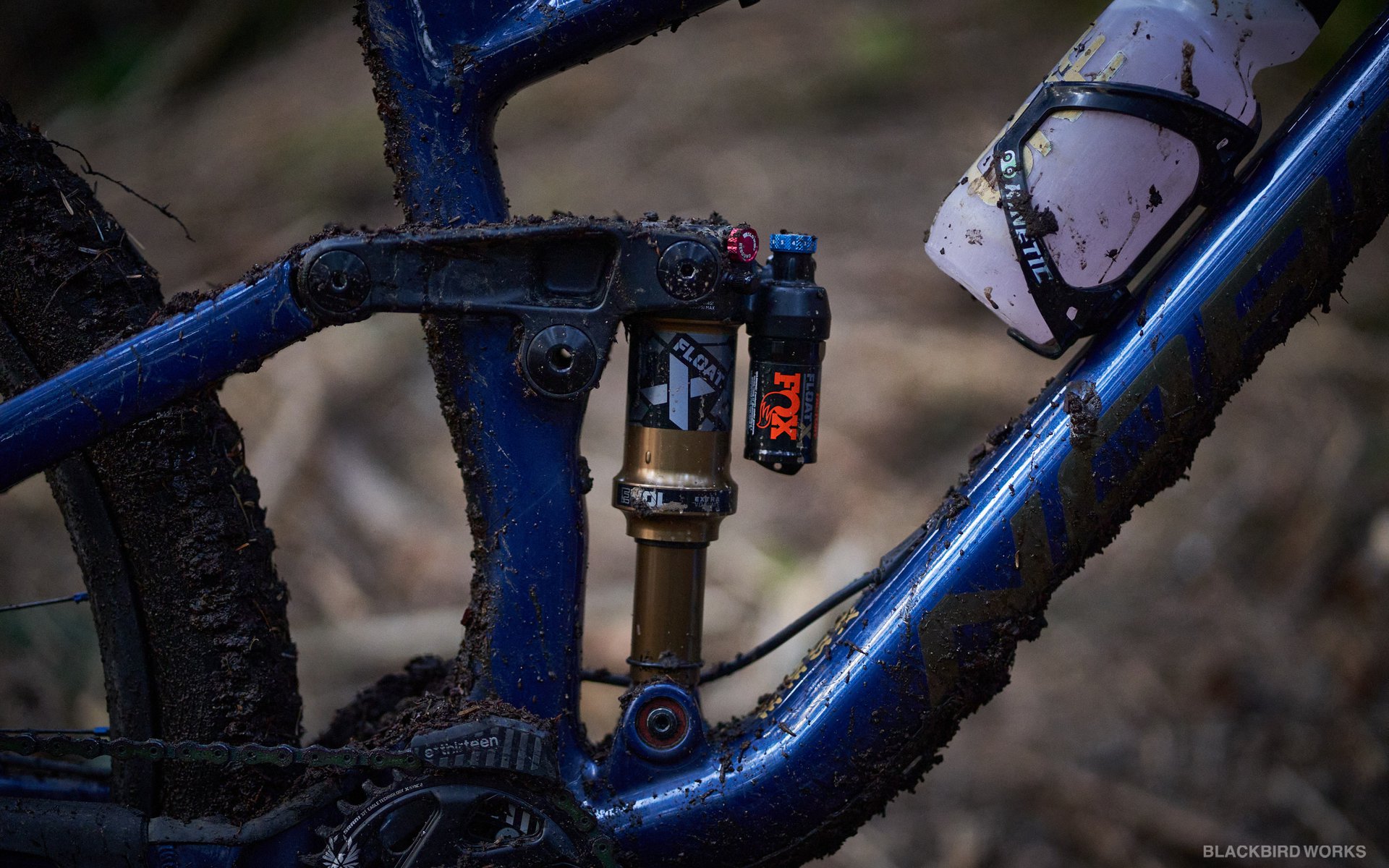
Ridden and Reviewed
Fox's New Float X Rear Shock
Fox had a relatively quiet launch of a new shock this year, the Fox Float X. This little shock is intended to replace the Fox DPX2, which was found on many high end trail and enduro bikes. The Float X is intended to meet the demands of aggressive trail riders. Fox claims their intent was to combine advanced damping, fade free performance and class leading durability in a light weight package. That's quite the design goal.

The Fox Float X was tested on a 2021 Norco Sight with a burly build. The perfect platform for testing the limits of the new Float X.
The existing DPX2 was a delightful little shock. I think the DPX2 had an excellent air spring, with a user friendly damper. If the Float X is replacing the DPX2, it has big shoes to fill.
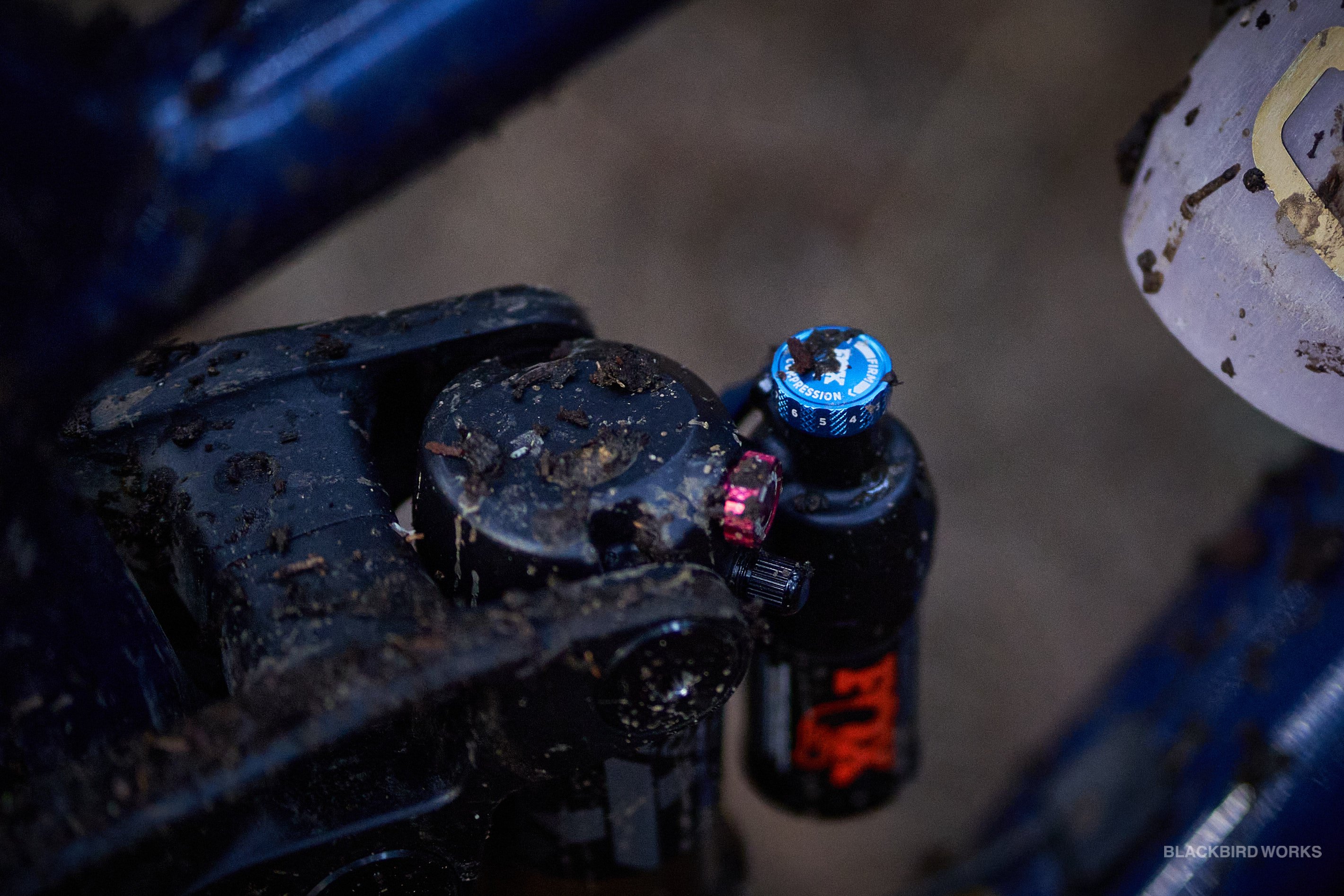
External damper adjustments on the Float X are simple. Blue knob adjusts compression damping, and the red knob adjust rebound damping.
The new Float X comes in a wide array of metric sizes, with both trunnion and dual DU bushing configurations. The Float X retains the relatively simple external damper adjustments of compression and rebound adjusters, along with a Firm Mode lever for restricting movement while climbing.
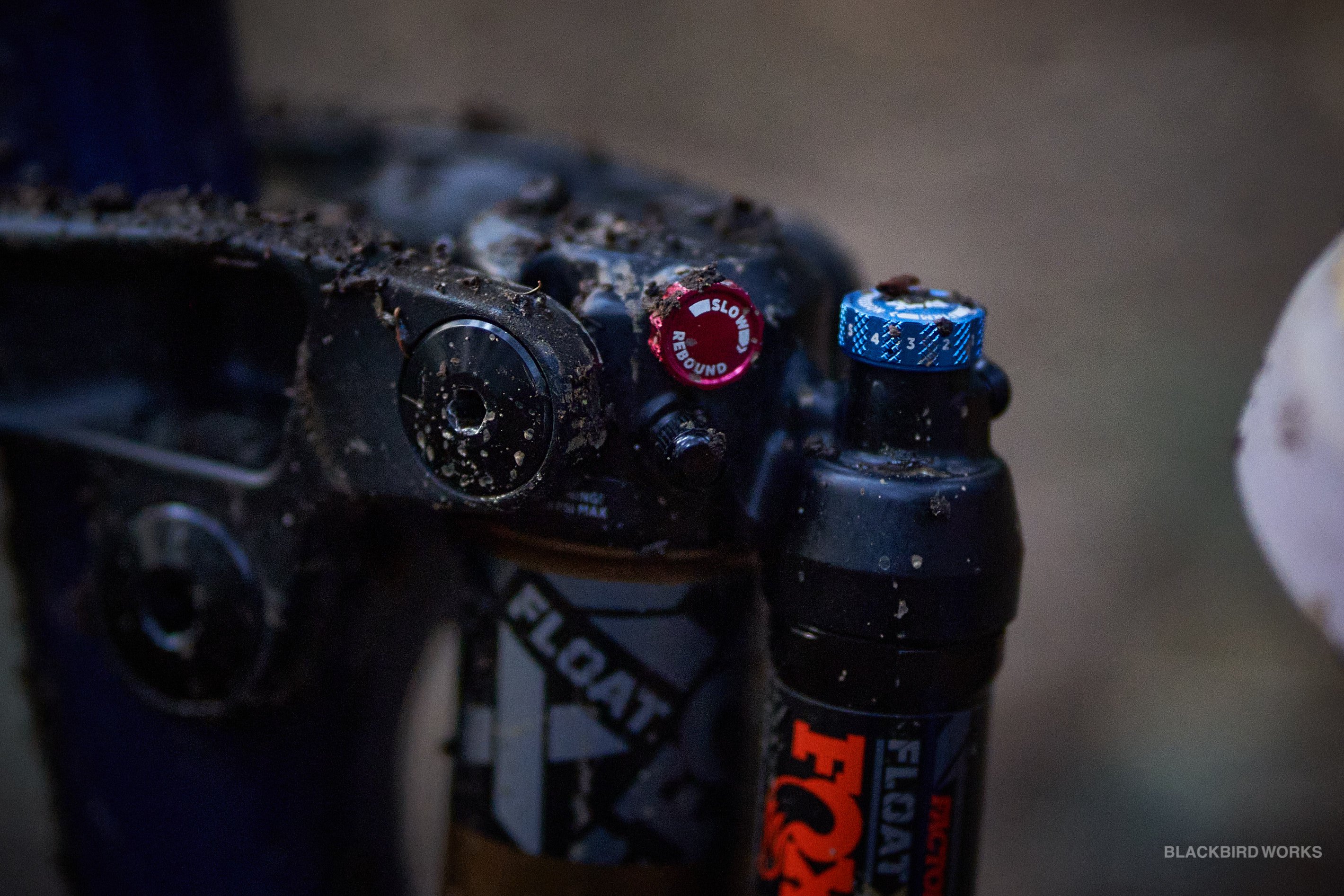
Both damper knobs have visible numbers referenced against an arrow on the body. This means you can quickly look at how clicks from open you're at, without having count the clicks in before counting the clicks out to your desired setting. Also the air valve has been relocated to improve access on most frames.
The air spring diameter in the Float X was increased vs. the DPX2, which lowers the air pressure. The newer volume reducer tokens are an array, and don't stack, which allows for finer increments of ramp adjustment to the air spring. I was on the higher end of the volume spacers, but that's partly due to the Sight not being particularly progressive. There should be plenty of volume spacer allowance for get an adequately progressive spring curve to match your bike's leverage curve.
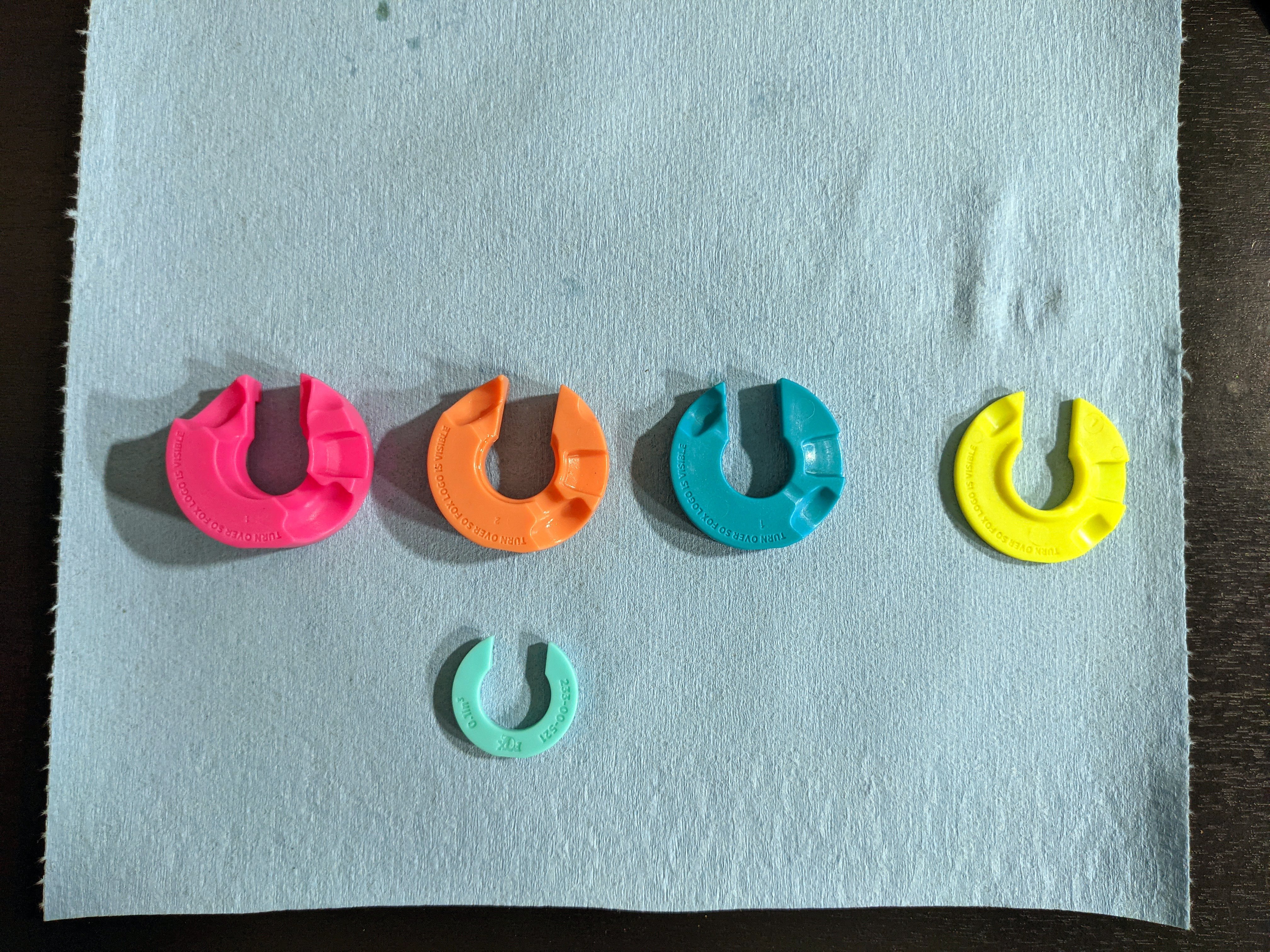
Fox has colour coded volume tokens for use with the Float X. The array of tokens makes finer tuning of the air volumes easier.
Final Setup:
Volume Tokens: 0.7 cubic inch (max. of 0.9 cubic inch)
Air Pressure: 260 psi (max. of 350 psi)
Compression: 4 clicks out (max. of 10 clicks out)
Rebound: 3 clicks out (max. of 12 clicks out)
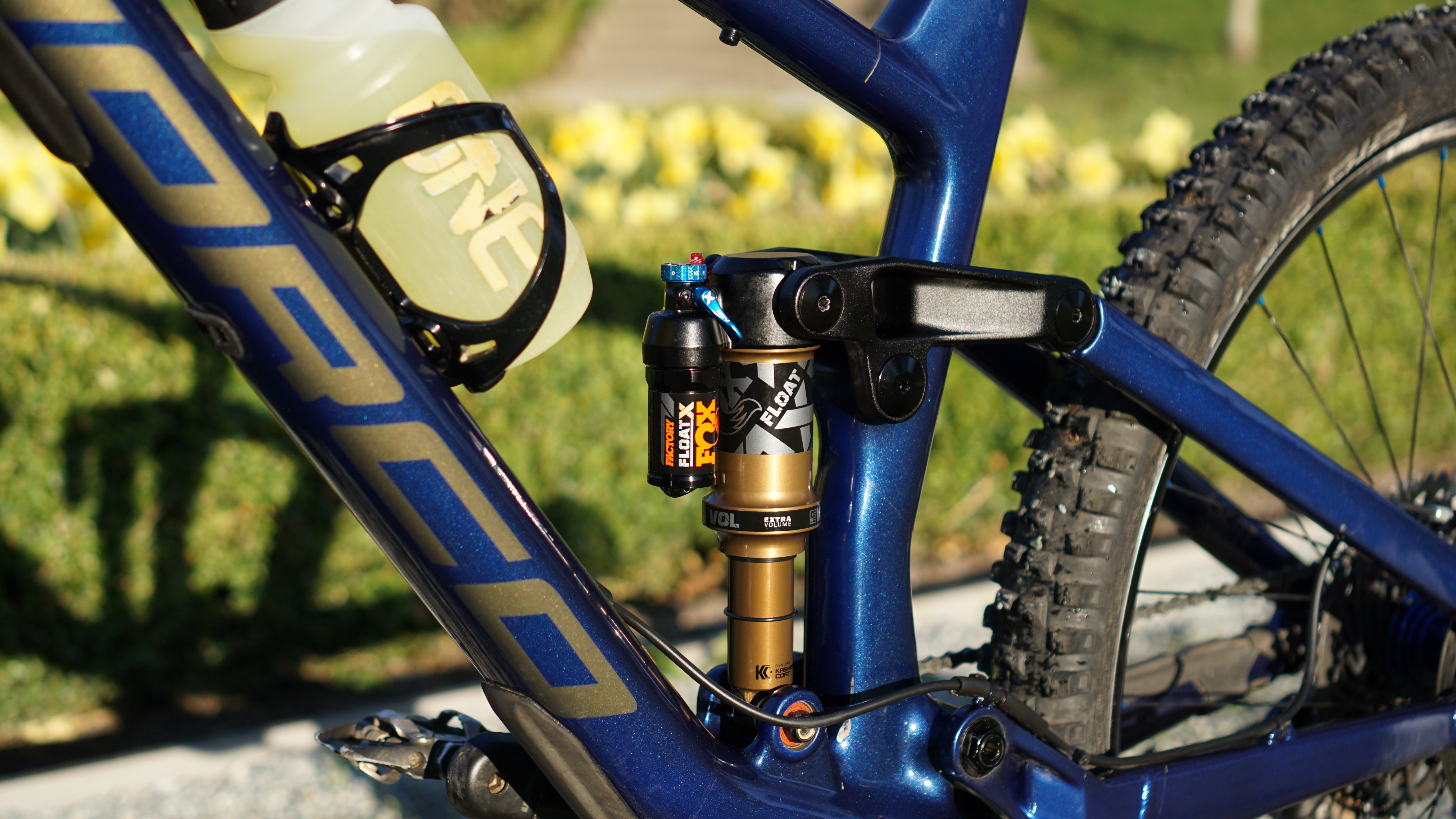
The Firm Mode lever proved easy to use even while riding. Compression and rebound were also easy to access on the other side of the shock.
On the trail I thought the Float X was excellent. It's not going to rival to performance of a coil shock, but for the weight and simple architecture I think the overall performance out of the Float X was better than expected. Once I got the right setup of volume spacers, and the right air pressure, setting the desired compression and rebound was easy with the tool-less external adjusters. The numbers on the knobs make for a handy reference. Without being able to adjust the high speed compression and rebound, I thought the damper tune picked by Fox worked really well. On the rebound side there is a wide range of adjustment. I wound up towards the slow side of the range, but still had ample adjustment range to go slower if needed. The low speed compression adjuster offered a wide range of damping as well. Each click seemed to make a noticeable difference for the rebound and compression adjusters. Although the high speed rebound can't be changed, I found the Float X recovered out of deep compressions quickly, but without ever topping out. Compression wise, the high flow piston being used in the Float X seem to do a decent job of filtering out the high speed chatter bumps.
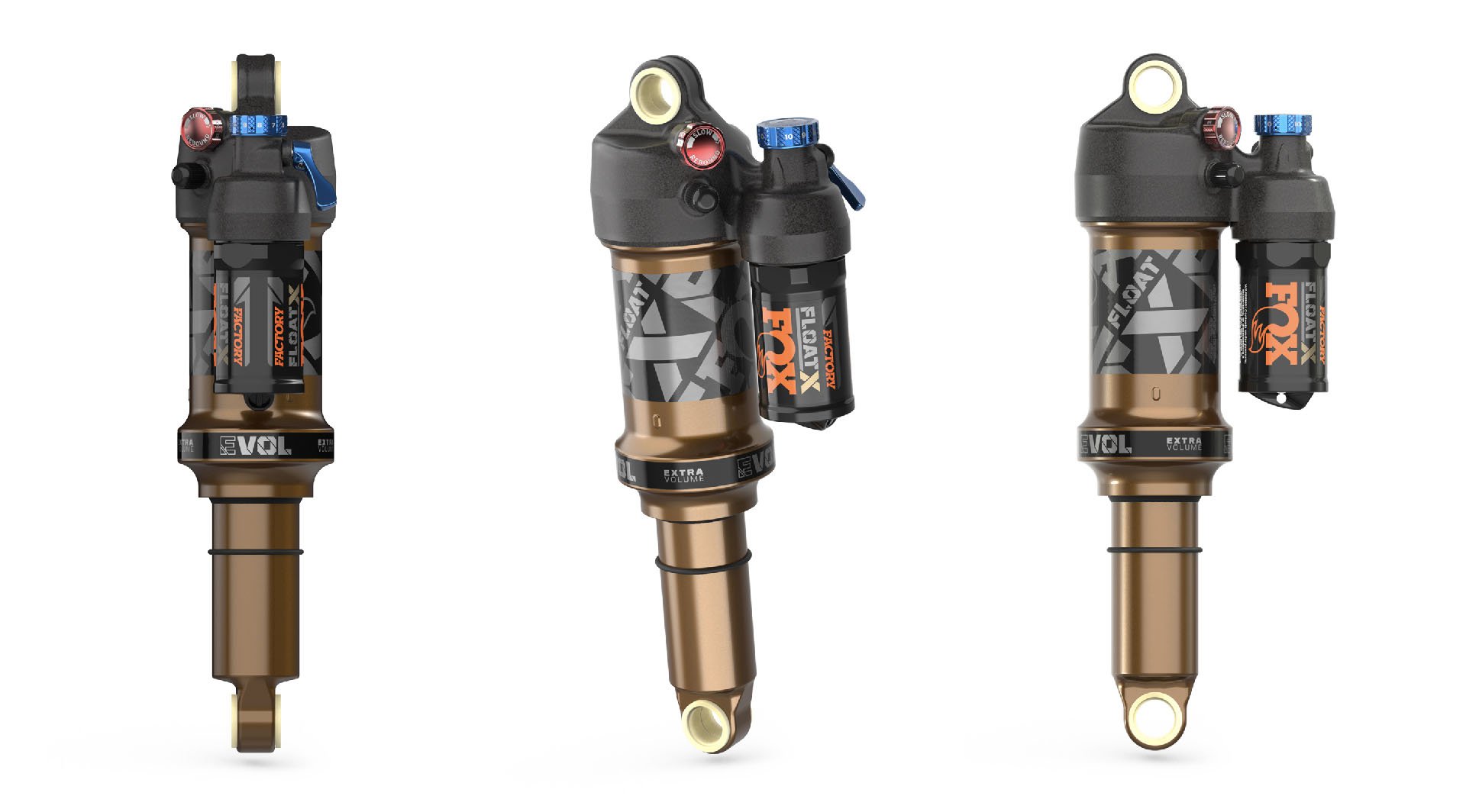
The shape is recognizable but the chassis is all new.
Overall the damper performance of the Float X was good considering this a fairly simple little shock. I found the shock active through rough sections, generating good grip. The low speed compression did a good job damping rider inputs through pedaling and pumping the bike. I don't think Float X quite rivals the sheer damper performance if it's bigger brother the Float X2, but it makes up for this in it's simplicity to setup. I think for many people they might get to a better setup on the Float X with it's fewer and more intuitive adjustments compared to the more complex Float X2.
The Firm Mode worked well, and provided an efficient platform for pedaling. The Firm Mode allows some shock movement to generate grip on technical climbs, but minimizes bobbing and other inputs while muscling up a climb. The lever is a nice length, in a good spot, and blue, which made flipping the switch while riding easy.

Pulling off a move like this requires some faith that the bike is going to be supportive through the G-out. I was happy with the shock ramp, without using all the spacers, and on a frame that isn't particularly progressive.
Over the testing period I didn't have any issues with the shock. The Float X also seemed quite consistent in it's performance. I got the shock quite hot on a few occasions and found the Float X to be fairly resistant to fade.

Lots of varied terrain here to test the new Float X.
I don't think the Float X is going to blow anyone way on a purely performance basis. If you're looking for the pinnacle of damper performance you're probably looking at the Float X2 or the DHX2. However I think the Float X offers a great mix of a good air spring, with a great little damper that's easy to set up, providing consistent performance in a lightweight package. I think Fox nailed their lofty design criteria with the Float X. For many folks the ease of set up will probably make the Float X a great option. The Float X might not be the most exciting damper product on the market, but I'm sure many folks are going thoroughly enjoy the it on their bikes.
Age: 41
Height: 183 cm / 6'
Weight: 87 kg / 192 lbs
Ape Index: 1.055 / +10 cm
Inseam: 81 cm / 32"
Preferred Riding: Gravity Mountain Bike
Bar Width: 800 mm
Preferred Reach: 500 - 520 mm (but this is stack and head angle dependent)
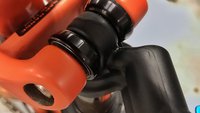
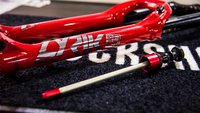









Comments
ackshunW
2 years, 9 months ago
Not in the market for a shock, but nicely written review, and:
That shot, aimed down toward the bottom of the roller.... beautiful and conveys the feeling of dropping in better than most I’ve ever seen! Great riding and great pics.
Reply
Deniz Merdano
2 years, 9 months ago
Hi praise! thank you!
Reply
Tim Coleman
2 years, 9 months ago
Deniz nailed that shot!
Reply
shutter2ride
2 years, 9 months ago
DPX2 quietly being phased out for redesigned Float X? Maybe it has to do with the many "slurpy" DPX2's that bike shops have to deal with?
Reply
JVP
2 years, 9 months ago
Least reliable shock ever.
Reply
Maxbas
2 years, 9 months ago
Hi, Thanks for the review! Could you please compare, if possible, your riding impressions the float x to the dpx2 it replaces?
Reply
Tim Coleman
2 years, 9 months ago
It's hard to say with any certainty without testing both shocks on the same bike back to back. I think the Float X is an incremental improvement over the DPX2. I wouldn't expect a revolutionary improvement. The DPX2 is still a great little shock. I feel like the Float X has a wider range of damper adjustments, and the lower air pressure with wide range of relative volume adjustment are steps forward.
Reply
ShoesMcGill
2 years, 2 months ago
"The existing DPX2 was a delightful little shock. I think the DPX2 had an excellent air spring, with a user friendly damper. If the Float X is replacing the DPX2, it has big shoes to fill."
I've owned two factory (2018, 2020) versions and they were both an upgrade from a DPS, but ultimately, junk shocks with spikey compression, limited adjustability, and a harsh ride. I recommend you ride a Mara Pro or TTX2 Air.
Reply
Alan Kaye
2 years, 9 months ago
I'm relatively new to mountain biking and full suspension bikes, but I love the tinkering aspect of the sport. I'd be interested to know your thoughts on the Fox Performance Float EVOL shock that comes standard on something like the Trek Fuel EX 8 versus this new shock from Fox.
Reply
Tim Coleman
2 years, 9 months ago
Unfortunately I don't have any time on the shock on the Fuel EX8, so can't give any relative impressions.
Reply
Andeh
2 years, 9 months ago
Interesting that the Float X is intended to phase out the DPX2. I didn't catch that in the initial press releases. I'm curious if the internal design is significantly different.
I've had 3 DPX2s (2 Performance Elites, one Performance) and didn't love them. The smaller volume made them really sensitive to small changes in pressure, and I had to run them all pretty high pressure (210+ psi) despite only being 170 lbs. I also could never find settings that provided a combination of good small bump and bottom-out. They either felt good on small bump but blew through travel, or had decent ramp up but skipped over all the small stuff. That matches what Vorsprung said about the DPX2: https://www.instagram.com/p/B2Cq26GH2-Y/?utm_source=ig_web_copy_link
"The rebound adjuster hugely affects the range of the compression adjuster. ... All the oil displaced by the damper shaft has to go through either the LSC adjuster orifice or the rebound adjuster orifice in the base valve. Because neither of those have a shimmed or otherwise speed sensitive circuit, it's very difficult to get low to mid speed support out of this damper without risking high speed harshness, unless the rebound is valved quite firmly, so that the rebound adjuster can be run quite open."
Reply
Tim Coleman
2 years, 9 months ago
I didn't have a chance to pull the shock apart, but I didn't notice a ton of influence of the compression adjuster to the rebound damper or vice versa. I found setup quite easy, and got to a spot I was happy with quickly.
Reply
bingobus
2 years, 9 months ago
Something I recently discovered when Specialized suspension calculator started working for my bike and suggesting I run 255psi (30 more than I had!) in my DPX2 is that there are negative volume spacers in there. I had to pull one out to get back to the correct sag point with that much pressure but now it bottoms out far less often while still being supple at the top.
Reply
AverageAdventurer
2 years, 9 months ago
I believe the internal design is significantly different. With the dpx2 being a twin tube shock and the float x being a monotube shock. So you shouldn't run into exactly the same problems vorsprung is talking about. But then again I know there's someone out there that's more of authority on the matter.
Reply
Salespunk
2 years, 9 months ago
This is dead on and considering the new Float is even more simple than the DPX2 there is no way it doesn't behave similarly. DPX2 was dual circuit while the Float goes back to a single circuit.
Would really like to see the old DPX2 compared head to head with the new Float. My gut is that it wouldn't be pretty on the damping side. The air spring in the new Float is an improvement with the higher surface area reducing the required pressure. Everything else looks like cost reduction/margin improvement for Fox.
Reply
CoilAir
2 years, 9 months ago
What is going on with that lower shock mount? Just, nothing covering the bearings...? Fully exposed?
Reply
Tim Coleman
2 years, 9 months ago
The stock lower shock pin on the Sight failed under me, and the local shops didn't have a replacement handy. Luckily I had a solid pin the perfect size, with a lock nut that's worked well so far. I really should get that replaced with the proper bits.
Reply
Jonathan King
2 years, 9 months ago
I had the same thing happen to me, seemed to be a pretty common problem. Norco has a stronger updated set now that they happily shipped to me.
Reply
cheapondirt
2 years, 9 months ago
All the shock a lot of us really need. Now with Kashima, to make us want it.
Reply
John Lee
2 years, 9 months ago
How does the Float X compare to the Super Deluxe Ultimate?
Reply
Please log in to leave a comment.